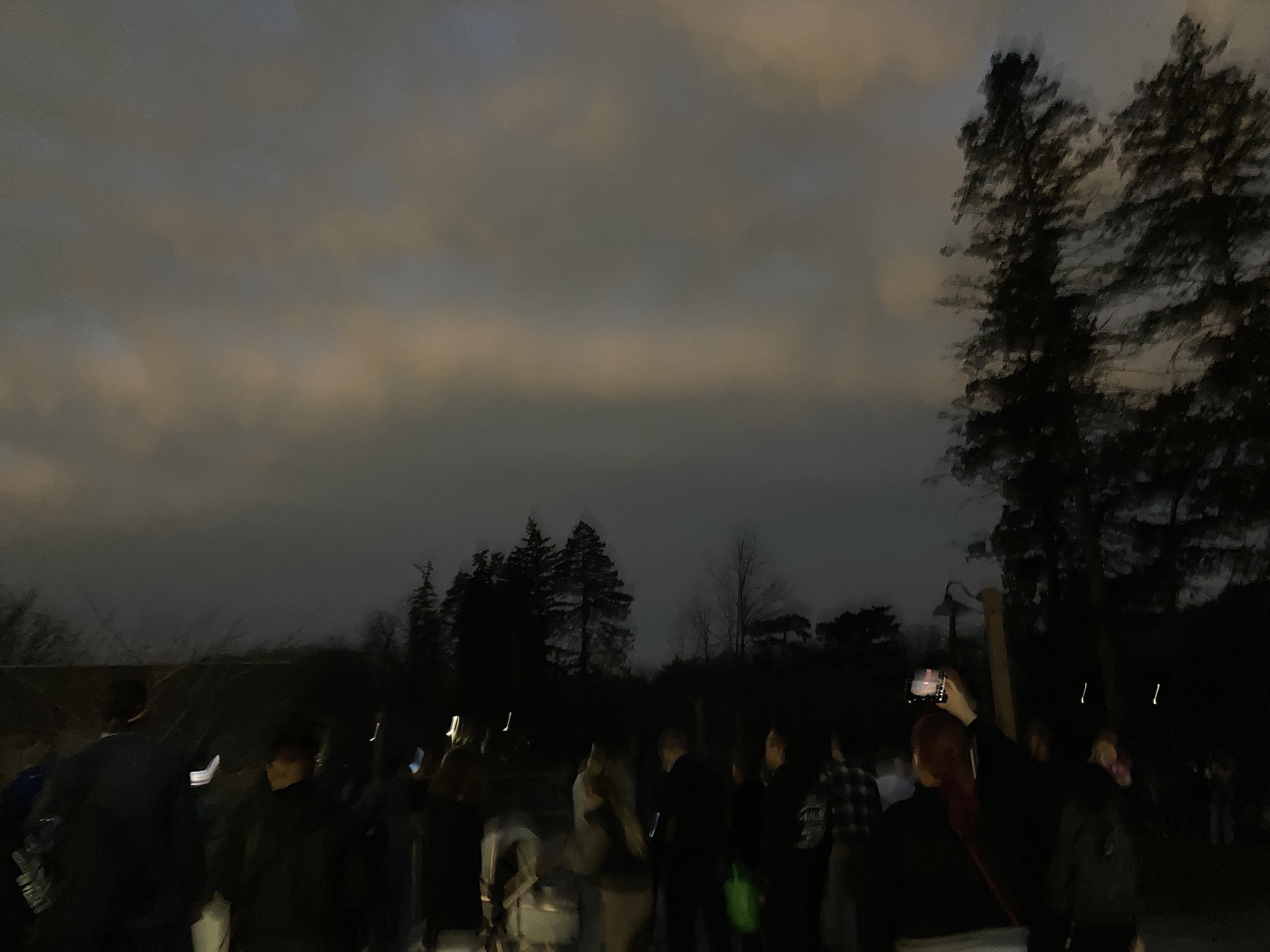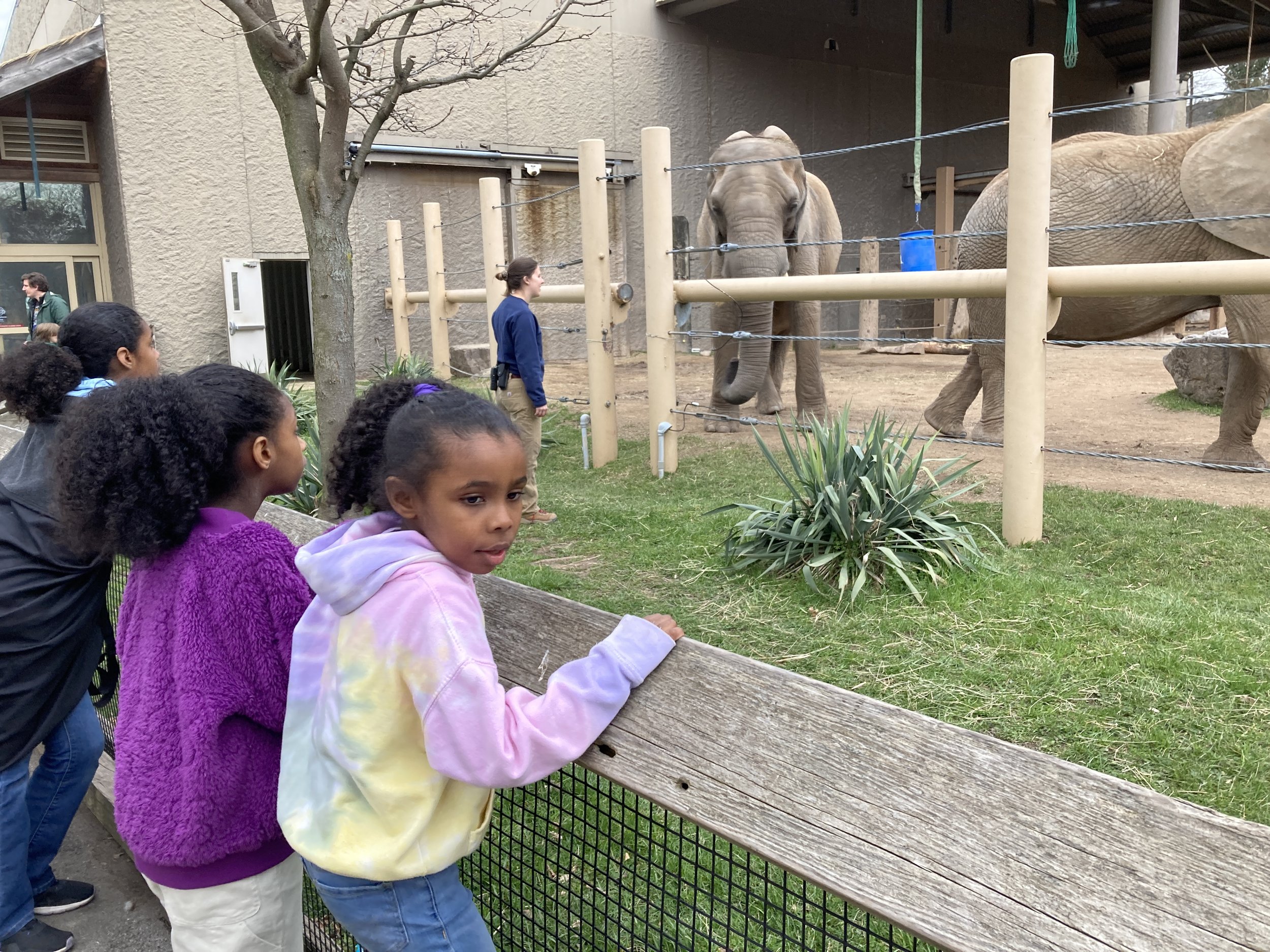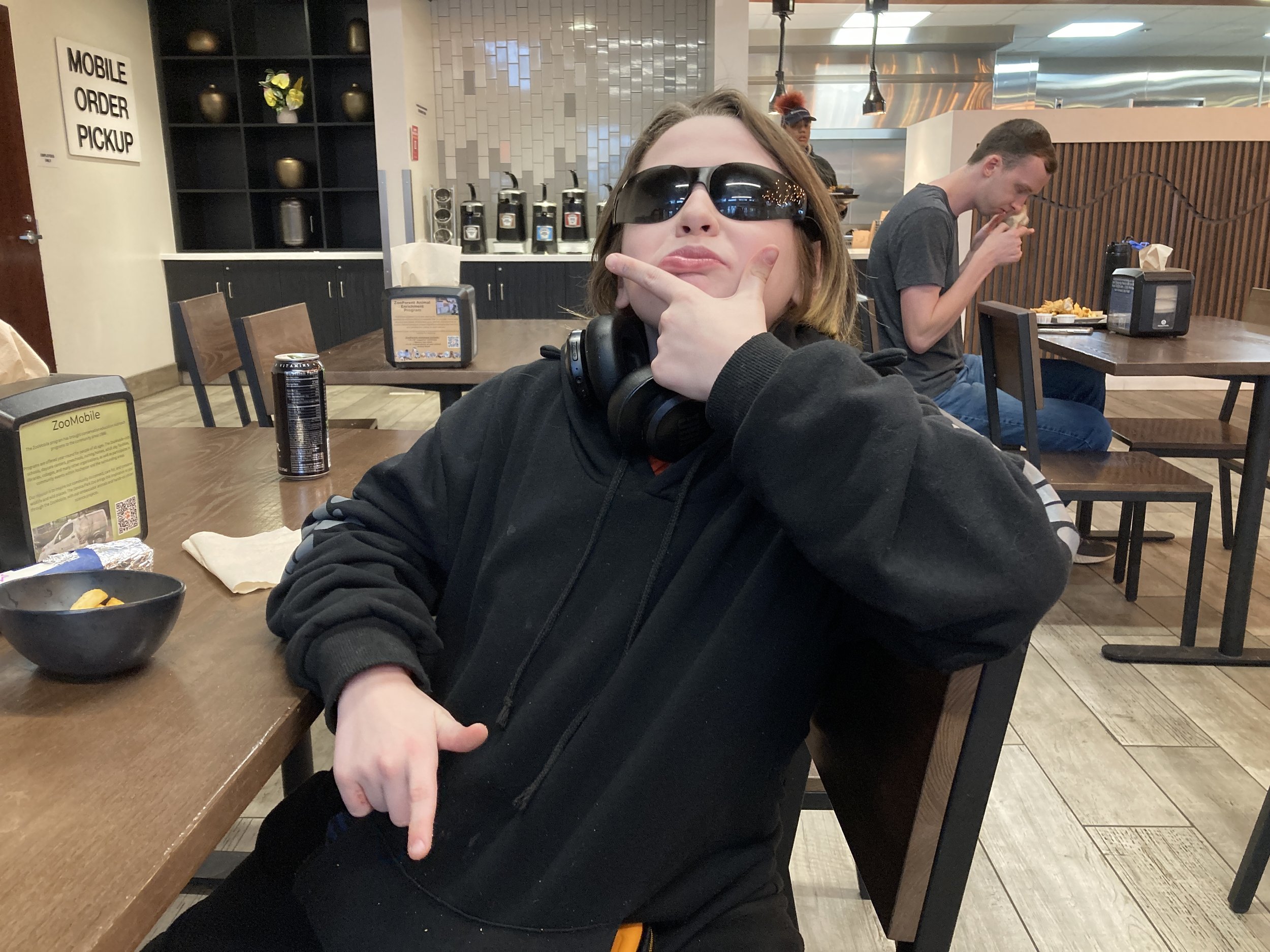Zoo draws visitors from hundreds of miles away
Written by Laura Nichols, Newspaper Guild of Rochester
Two giraffes paced, then looked into their lighted barn. A rhino scooted into its barn, as did two elephants. Turkey vultures roosted. Other birds went quiet. A lioness looked around in apparent confusion.
And the lion slept through the whole thing.
The Seneca Park Zoo experienced a busy April day as visitors came from near and far to witness the total solar eclipse and its effect on animals on Monday, April 8, said Donato DiRenzo, the zoo’s communications coordinator.
“I get to go to a zoo for the first time and I get to see an eclipse for the first time!” exclaimed Vinny Tropeano of Hudson, who chose to travel to Rochester with his mother, Linda Bruno, his sister and his sister’s boyfriend to celebrate his 15th birthday. The otters were his favorite animals.
Marc Pucci of Bridgewater, N.J., also celebrated his birthday at the zoo, though he wouldn’t give his age. He and his wife, Kathy, brought their children and grandchildren to Rochester, where they also visited the Rochester Museum and Science Center and Strong National Museum of Play.
“I had wanted to go to Strong for a long time,” said Eric Mikula, who traveled from Aurora, Ontario, with his wife, Patti, and their 16-year-old son, Owen. “It was spectacular.”
They came to the zoo to hear a talk by NASA’s Skyler Kleinschmidt, though they were impressed by the number of other events being held here, even one at their hotel, the Hilton Garden Inn in Pittsford. “Everywhere in Rochester, it’s been amazing,” Eric Mikula said.
Despite heavy clouds that obscured the sun, the sudden darkness when the total eclipse began affected humans as well as animals.
“That was incredible,” said Cindy Estrada of Reading, Pa. “… It was kind of an emotional experience.”
Afterward, “It turned light so quickLy,” said Charlice Jean-Louis, 10, of Rockland, who was with her parents, Allen and Waleska, and sisters Chloe, 10, and Chelsea, 5.
“I wasn’t expecting it to get light so quickly,” said Joan Robotham, who traveled several hours with Tom Durkin to the zoo. She also had noticed the temperature dropping before totality. They had seen a total eclipse in Nebraska previously.
The zoo offered several eclipse-related events Saturday, Sunday and Monday, including talks about the eclipse and NASA by Kleinschmidt, whose twin sister works at the zoo and whose mother lives in Rochester.
He is a program executive in NASA’s Heliophysics Division at NASA headquarters in the John F. Kennedy Space Center in Florida. The division studies how the sun — including solar wind and other solar weather it creates — affects planets’ atmospheres.
Two NASA jets were to fly at 50,000 feet all along the path of totality to gather data on the eclipse’s effect on the upper atmosphere. In addition, rockets were to be launched to gather more information 15 minutes before and after the eclipse as well as at totality.
Kleinschmidt was involved in the 2018 launch of the Parker Solar Probe, which in 2021 became the first spacecraft to fly inside the sun’s corona, its upper atmosphere. It flies closer to the sun than the planet Mercury orbits. He continues to be involved in that mission.
He also is working on the NASA team that will launch Hermes in 2025. That instrument package is intended to improve forecasts of space weather that could affect astronauts on or near the moon and Mars.





